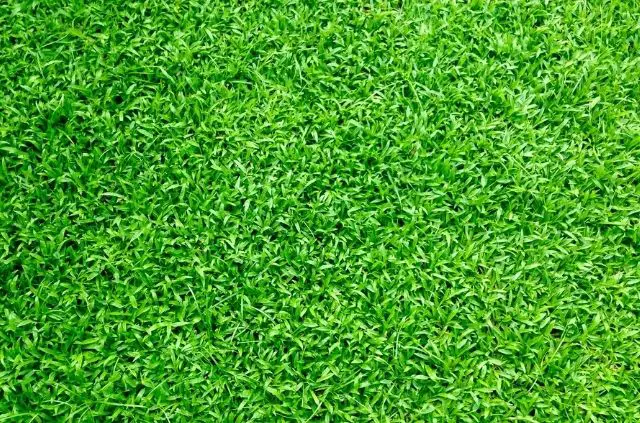Will Overseeding Kill Weeds?
Overseeding is a lawn care practice where new grass seed is planted on your existing lawn. This helps fill in bare spots and it will make your grass more dense. But will overseeding kill weeds? Let’s take a look.
No, overseeding by itself will not kill weeds, or choke them out. Combining the two will only bring in new grass and weeds together. You need to apply a weed control product to your lawn before planting new grass seed.
How to Kill Weeds Before Overseeding
Killing weeds before overseeding is a straightforward process. And if you want to get the job done correctly, it’s important to follow the steps listed below. This will eliminate weeds from your lawn, prevent them from coming back in the future, and promote new grass growth.
1. Start in the Fall
Don’t get me wrong – you can kill weeds anytime during the year. But there are a few reasons why it helps to clean up your lawn in the fall. For starters, the air temperature begins to drop and the soil stays warm.

This creates an ideal climate to plant new grass. In the summer months temperatures are too hot and most lawns die – unless you continue watering. That means the lawn will go dormant and not look green.
And a yard with weeds also has dead grass, brown, and yellow spots. These common problems require overseeding, which is a process best done in the fall. The goods news is that weed seeds don’t germinate in the fall – so new grass can flourish.
2. Mow Low
One of the first steps to overseeding involves mowing. You will need to adjust your lawn mower height before killing weeds, aerating, and overseeding. Begin by lowering the blades between 1.5 and 2 inches.
It’s very important to mow low before aerating. If grass is too long it will be much harder during the plug removal process. But you also don’t want it to clog up the aerator and damage the machine.
Long grass will also block sunlight from the seeds. And make sure to bag your grass clippings during this time. The idea is to remove as much dead grass as possible from the surface, so you can create better seed to soil contact.
3. Apply Weed Killer
There are many different weed control products you can use on your lawn. But this step should always be done after cutting the grass. It will be much easier to spray and target problem areas when the lawn is cut short.
One of the best ways to apply weed control is to use a pump sprayer. All you need to do is walk around your yard and apply the product to weeds. Just make sure to read the instructions, as some weed killer requires the grass to be damp.
Make sure to use signs letting your neighbors know you have weed killer on the lawn. Most of these products contain chemicals that can be harmful. So, you (and your pets) should stay off the lawn during this time.
4. Aerate
If you want to get the most out of overseeding, it’s crucial to aerate first. Aerating helps relive compacted soil, in order for water and nutrients to enter the ground. This process is ideal for strengthening grass roots.
Aerating also creates a hole for new grass seed to access the soil. When using a machine core aerator for example, dirt plugs will get removed. And when it comes time to overseed there will be empty holes for the seeds to fall into.
Aerating is a labor intensive job that can usually be completed in a few hours. This will depend on the size of your lawn, but it shouldn’t take the whole day. You can rent one of these machines from your local hardware store.
5. Overseed
Once aerating is complete you’re finally ready to plant new grass seed. This is a simple process, because all you need is the seed itself and a spreader. Overseeding will increase the density of your lawn and fill in bare patches.

You won’t get perfect germination by doing this alone, because grass seed needs to be covered. But if you want to help seed to soil contact, you can rake all of the new grass seed on your lawn to help.
Before deciding on a particular brand of seed, make sure to measure your yard. You don’t need to know the exact size, but it will help you figure out how much product you will need to use for overseeding.
Should I Kill Weeds Before Aerating?
Most lawn care professionals agree that is helps to kill weeds before aerating. But I understand this isn’t always realistic. Sometimes you might not have enough time on your hands to go through all of the steps listed above.
Just know that overseeding will not kill weeds, or choke them out. Following this practice by itself will only encourage new grass to grow in close proximity to weeds. And if you decide to apply weed killer later on, make sure it isn’t immediately after overseeding.
This will have a negative impact on the seeds, especially if germination hasn’t begun. You will need to wait until the grass is at least 2 inches tall before applying weed control. At this length the grass is mature enough and roots have already established deep in the soil.
Planting Grass Over Weeds
Planting grass over weeds is possible, but there are some things you should do first. If you aren’t using a weed killer product, try removing the weeds with your hands. This will require a little more elbow grease, but it’s doable on a small lawn.
With larger areas just make sure to pull out the largest weeds first. Don’t bother with every small weed, just focus on the big stuff. Once this step has been done you can rake in the new grass seed to establish good seed to soil contact.
Lastly, follow the watering instructions on the bag and be careful not to overwater the seed. Examine the lawn each day for any signs of new weeds. Deal with problem areas as soon as possible, so the newly planted grass can continue growing.
Search Terms
- Will overseeding kill weeds?
- How to kill weeds before overseeding






